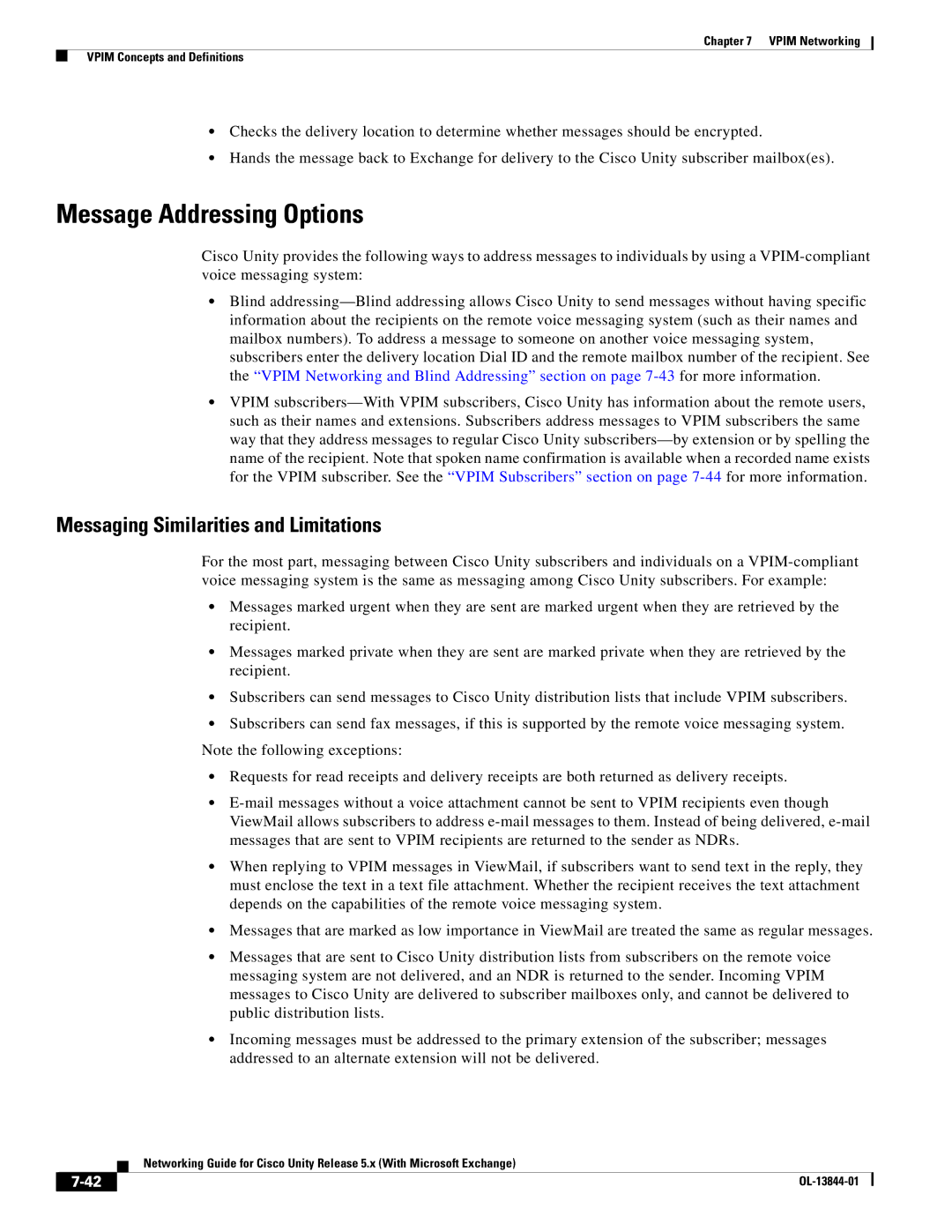
Chapter 7 VPIM Networking
VPIM Concepts and Definitions
•Checks the delivery location to determine whether messages should be encrypted.
•Hands the message back to Exchange for delivery to the Cisco Unity subscriber mailbox(es).
Message Addressing Options
Cisco Unity provides the following ways to address messages to individuals by using a
•Blind
•VPIM
Messaging Similarities and Limitations
For the most part, messaging between Cisco Unity subscribers and individuals on a
•Messages marked urgent when they are sent are marked urgent when they are retrieved by the recipient.
•Messages marked private when they are sent are marked private when they are retrieved by the recipient.
•Subscribers can send messages to Cisco Unity distribution lists that include VPIM subscribers.
•Subscribers can send fax messages, if this is supported by the remote voice messaging system. Note the following exceptions:
•Requests for read receipts and delivery receipts are both returned as delivery receipts.
•
•When replying to VPIM messages in ViewMail, if subscribers want to send text in the reply, they must enclose the text in a text file attachment. Whether the recipient receives the text attachment depends on the capabilities of the remote voice messaging system.
•Messages that are marked as low importance in ViewMail are treated the same as regular messages.
•Messages that are sent to Cisco Unity distribution lists from subscribers on the remote voice messaging system are not delivered, and an NDR is returned to the sender. Incoming VPIM messages to Cisco Unity are delivered to subscriber mailboxes only, and cannot be delivered to public distribution lists.
•Incoming messages must be addressed to the primary extension of the subscriber; messages addressed to an alternate extension will not be delivered.
| Networking Guide for Cisco Unity Release 5.x (With Microsoft Exchange) |
|
